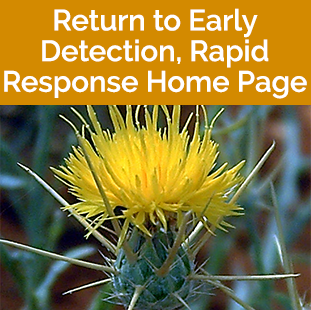Purple Loosestrife
(1B, limited presence in Montana)
(Lythrum salicaria)
Quick ID
- Stems can be felt to be distinctly square, five or six-sided, and up to fifty stems per plant
- Showy pinkish purple flowers on long spikes at the top of the plant, blooming late in the summer, with individual flowers having five or six petals
- Opposite or whorled, lance-shaped, stemless leaves with smooth margins
- Plants are often head height or taller at full maturity, although they are regularly smaller too

Map Courtesy of Montana Natural Heritage Program, Purple Loosestrife – Low Suitability: 9% of Montana, Moderate: 3%, Optimal: 2%. Larger image.
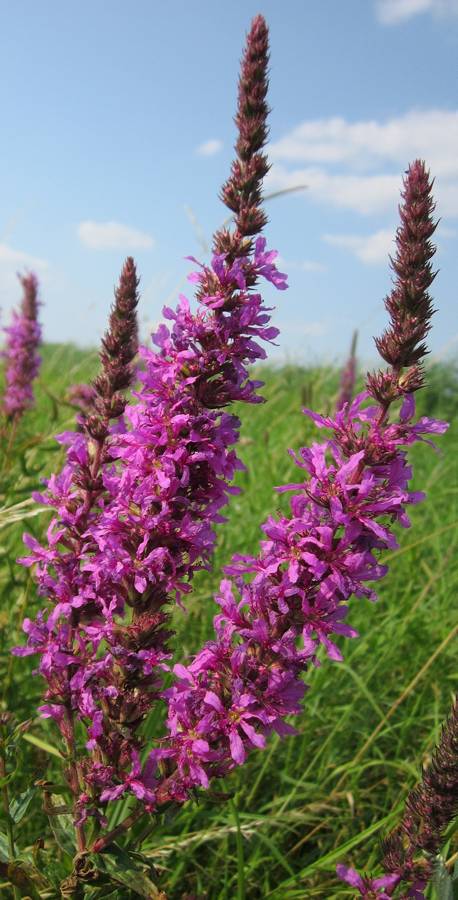
Video Information
Weed Images


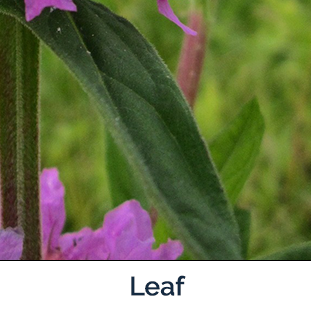

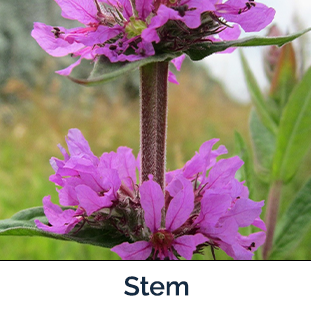
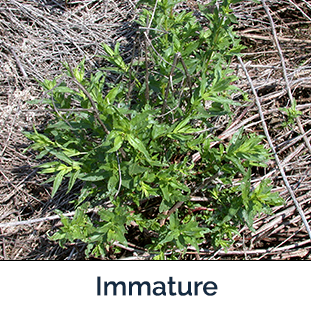
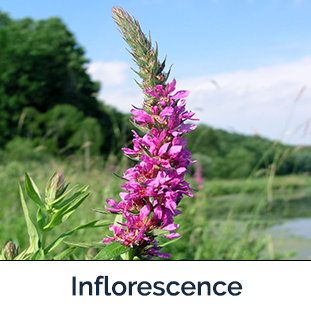

Weed Specifications
| Type | Information |
|---|---|
| Toxicity | Non-toxic |
| Best Management Practices |
Biological for larger infestations; chemical, but specialized aquatic herbicides must be used and used with appropriate precautions; mechanical, clipping and bagging seed heads and pulling smaller plants, although it is difficult to remove entirety of root system and plants can resprout from stem fragments; it is an escaped ornamental – do not buy seeds or plant in gardens *See additional documents below |
| Habitat | Canals, ditches, ponds, wetlands, marshes, roadsides, islands, moist soil, shallow water, frequently flooded areas below high-water mark, shorelines of any waterbody |
| Root | Taproot and rhizomes |
| Leaves | Smooth-margined, lance-shaped, stemless and opposite or whorled arrangement on the main stem |
| Lifespan | Perennial |
| Similar Looking Plants | Fireweed, Dame’s Rocket, Dotted Blazing Star |
| Important Information | A single plant can produce more than 2 million seeds annually, found in almost every state and Canadian province, can survive 20 months underwater with no plants parts above the water surface; often grows in difficult to access sites, requiring boats and wading; hard to find among other plants in riparian habitat, often intermixed with tall and dense stands of willows or cattails, especially before it flowers, easily being mistaken for plants like wild mint when small; creates monocultures that can impede waterflow and recreation and diminish wetland plant diversity and wildlife habitat |

